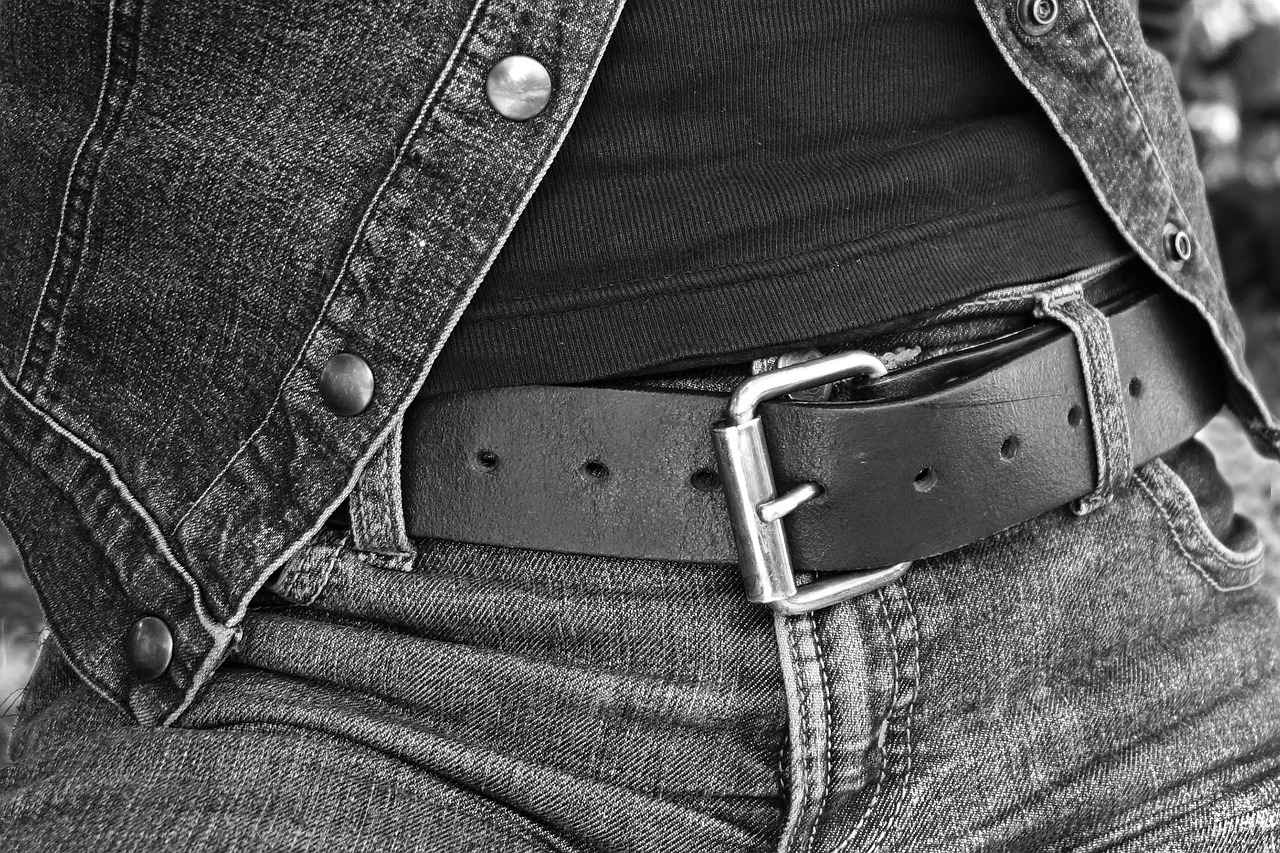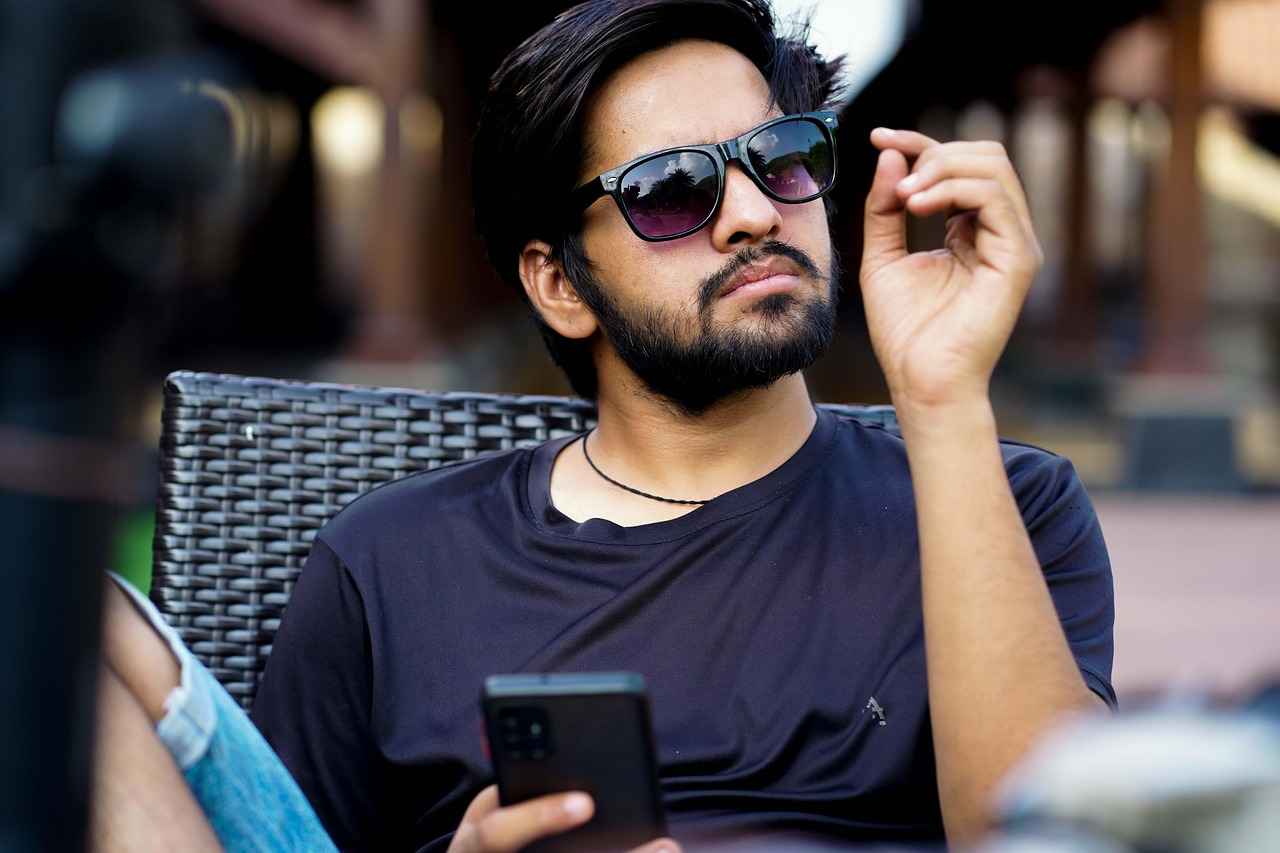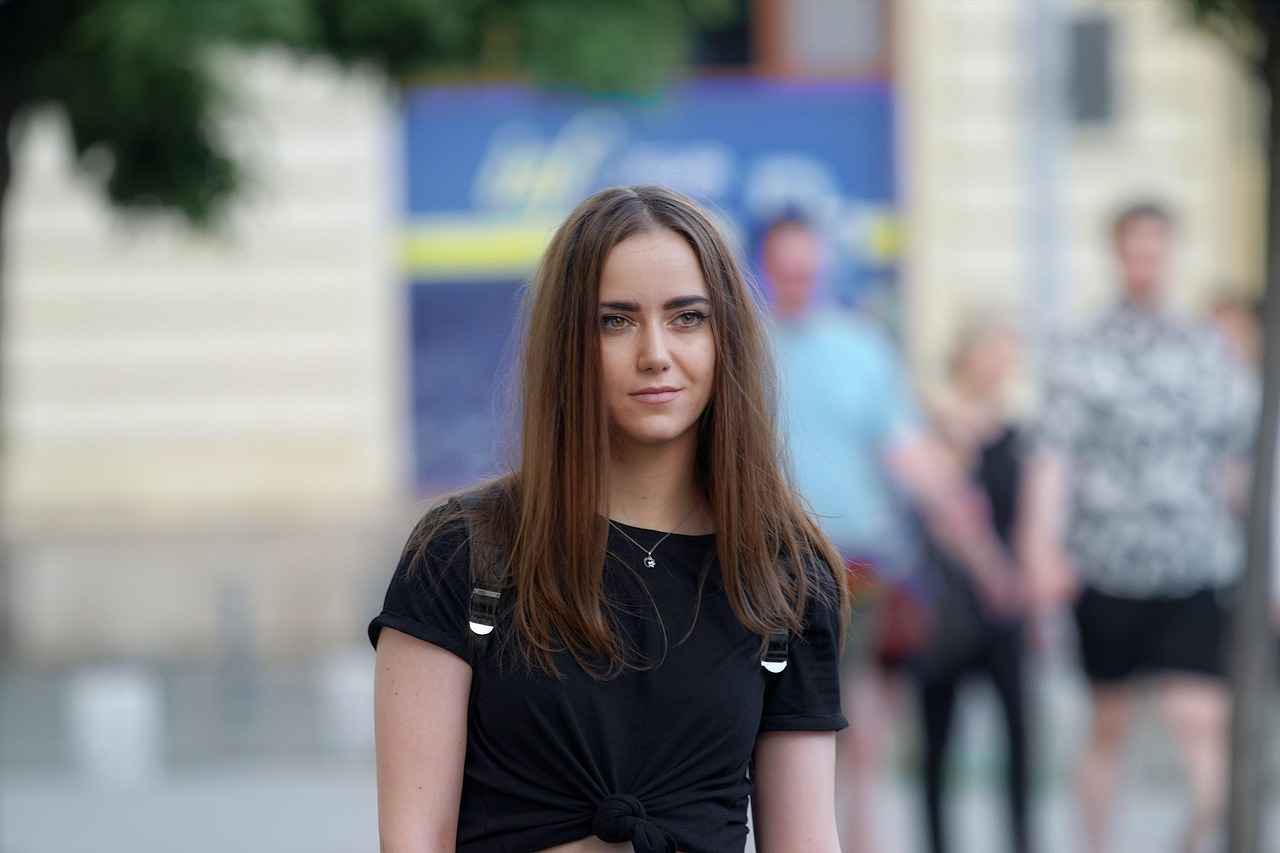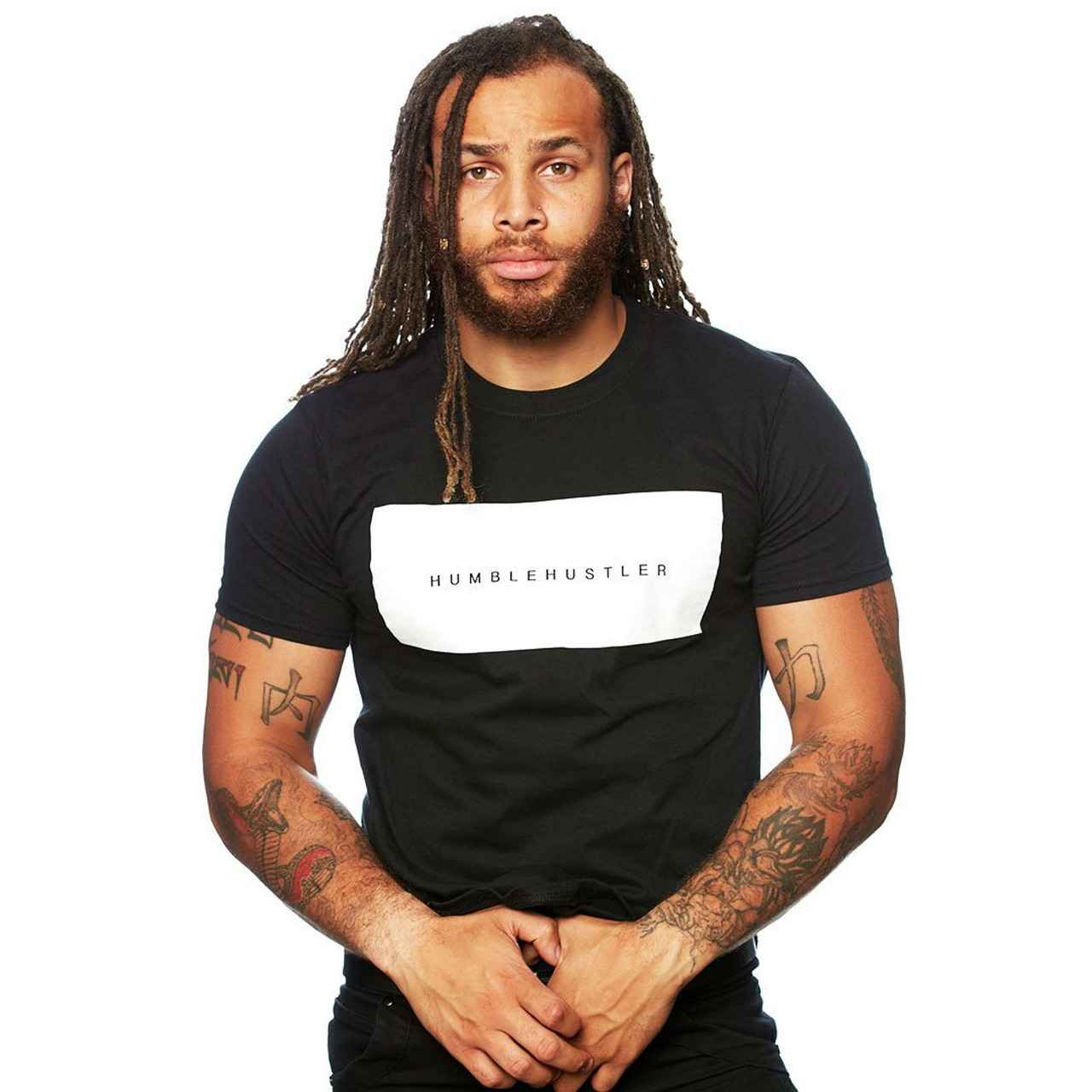This article serves as a comprehensive guide on designing custom T-shirts for school events or groups. It covers essential tips, creative design ideas, and practical steps to create memorable apparel that fosters unity and school spirit.
Understanding Your Audience
Identifying your target audience is crucial for effective T-shirt design. Consider factors such as age, interests, and the nature of the event. This understanding will help create designs that resonate well with the group.
Choosing the Right Fabric
Selecting the right fabric enhances comfort and durability. Explore various materials such as:
- Cotton: Breathable and soft, ideal for casual wear.
- Polyester: Moisture-wicking and durable, great for active events.
- Eco-Friendly Options: Sustainable fabrics like organic cotton appeal to environmentally conscious audiences.
Designing Your T-Shirt
Creating a compelling design involves careful consideration of color, typography, and graphics. Incorporate school colors and logos to reinforce group identity. Use color psychology to evoke the right emotions and choose legible fonts that align with the event’s theme.
Printing Techniques Explained
Different printing techniques can affect the final product’s quality and cost. Popular methods include:
- Screen Printing: Ideal for bulk orders with vibrant colors.
- Digital Printing: Best for intricate designs and smaller quantities.
Setting a Budget for Your Project
Establishing a budget is essential for managing costs. Consider all expenses, including materials, printing, and shipping. Implement cost-effective design strategies, such as using simple designs and bulk ordering, to maximize your budget.
Promoting Your Custom T-Shirts
Once your T-shirts are ready, use effective promotion strategies to generate excitement. Leverage social media platforms to showcase designs and engage with your audience. Consider launching a pre-order campaign to gauge interest and secure funding.
Conclusion: Making Your Event Memorable
Custom T-shirts can significantly enhance the experience of your school event or group. By following these guidelines, you can create unique apparel that fosters unity and pride among participants, making your event truly memorable.

Understanding Your Audience
When it comes to designing custom T-shirts, is a fundamental step that can significantly influence the success of your design. By identifying the target audience, you can create T-shirts that not only appeal visually but also resonate on a deeper emotional level. Here are some key factors to consider:
- Age Group: Different age groups often have distinct preferences in terms of colors, graphics, and styles. For example, younger audiences may favor trendy designs and vibrant colors, while older individuals might prefer classic styles and subdued palettes.
- Interests and Hobbies: Understanding the interests of your audience can guide your design choices. If your group is passionate about sports, incorporating relevant motifs or slogans can enhance engagement.
- Event Nature: The context of the event plays a crucial role in design decisions. A casual school picnic might call for light-hearted and fun designs, whereas a formal event may require a more sophisticated approach.
Additionally, conducting surveys or focus groups can provide valuable insights into what your audience truly wants. This feedback can guide not only the design but also the messaging on the T-shirts, ensuring it aligns with the values and preferences of the group.
Incorporating these elements into your design process will help create custom T-shirts that are not only visually appealing but also foster a sense of connection and pride among wearers. Ultimately, the more you understand your audience, the more effective your T-shirt designs will be.
By focusing on these aspects, you can create T-shirts that leave a lasting impression and enhance the overall experience of your event.

Choosing the Right Fabric
for custom T-shirts is a critical step in ensuring your apparel is both comfortable and durable. The right material not only enhances the wearability of the T-shirts but also impacts the overall look and feel of the design. Let’s delve into the various fabric options available and their unique benefits to help you make an informed decision for your event.
- Cotton: Known for its softness and breathability, cotton is a popular choice for T-shirts. It provides excellent comfort, making it ideal for warm weather events. However, it may not be as durable as synthetic fabrics and can shrink when washed.
- Polyester: This fabric is recognized for its moisture-wicking properties, making it perfect for athletic events or outdoor activities. Polyester T-shirts are lightweight, quick-drying, and resistant to wrinkles, which adds to their durability.
- Blends: Combining cotton and polyester, blended fabrics offer the best of both worlds. They provide the comfort of cotton with the durability and moisture-wicking benefits of polyester. This makes them suitable for a variety of events.
- Eco-Friendly Fabrics: For those looking to make a sustainable choice, consider organic cotton or recycled polyester. These materials not only reduce environmental impact but also appeal to eco-conscious audiences.
When selecting fabric, consider the weight of the material, as it affects the T-shirt’s drape and feel. Lighter fabrics are generally more comfortable in hot weather, while heavier fabrics provide a more structured look. Additionally, think about the fit of the T-shirt. Whether you prefer a relaxed, fitted, or unisex style, ensure that the fabric complements the chosen fit for maximum comfort.
In conclusion, the right fabric can significantly enhance the quality and appeal of your custom T-shirts. By understanding the benefits of each material, you can select the best option that aligns with your event’s needs and audience preferences.
Cotton vs. Polyester
When it comes to choosing the right fabric for custom T-shirts, understanding the differences between cotton and polyester is essential. Each material has its own unique characteristics that make it suitable for various occasions and preferences.
Cotton is a natural fiber known for its breathability and comfort. This fabric allows air to circulate, making it an excellent choice for warm weather or active events. Its softness against the skin provides a cozy feel, which is often preferred for casual wear. Additionally, cotton is hypoallergenic, making it suitable for those with sensitive skin. However, it does have some drawbacks; cotton tends to retain moisture, which can lead to discomfort if worn during vigorous activities.
On the other hand, polyester is a synthetic fabric that boasts remarkable durability and moisture-wicking properties. This means that it efficiently pulls sweat away from the body, keeping the wearer dry and comfortable during physical activities. Polyester is often used in athletic wear due to its ability to withstand wear and tear, making it a popular choice for team uniforms and sports events. However, it may not offer the same level of breathability as cotton, which can be a consideration for some users.
In summary, the choice between cotton and polyester ultimately depends on the specific needs of the event and the preferences of the wearers. For casual, everyday use, cotton might be the better option, while polyester is ideal for active situations where durability and moisture management are key.
| Feature | Cotton | Polyester |
|---|---|---|
| Breathability | High | Moderate |
| Comfort | Soft and Comfortable | Less Soft |
| Durability | Moderate | High |
| Moisture-Wicking | No | Yes |
| Hypoallergenic | Yes | No |
Eco-Friendly Options
in custom T-shirt design are becoming increasingly important as consumers become more aware of their environmental impact. Choosing sustainable fabrics such as organic cotton or recycled materials not only helps the planet but also appeals to a growing demographic of environmentally conscious individuals.
When selecting fabrics for your custom T-shirts, consider the following eco-friendly options:
- Organic Cotton: Grown without synthetic pesticides or fertilizers, organic cotton is a sustainable choice that reduces chemical runoff and promotes biodiversity.
- Recycled Polyester: Made from post-consumer plastic bottles, recycled polyester helps reduce waste and conserves resources, making it a fantastic alternative to virgin polyester.
- Bamboo Fabric: Known for its softness and breathability, bamboo is a rapidly renewable resource that requires less water and pesticides compared to traditional cotton.
- Hemp: This durable fabric grows quickly and requires minimal resources, making it an eco-friendly option that also offers natural antibacterial properties.
Incorporating these sustainable materials into your T-shirt designs not only aligns with eco-conscious values but also enhances your brand image. By promoting your use of eco-friendly fabrics, you can attract a broader audience who appreciates sustainability and ethical practices.
Furthermore, utilizing eco-friendly options can contribute positively to your marketing strategy. Highlighting your commitment to sustainability can resonate with customers, fostering loyalty and encouraging them to spread the word about your brand.
In conclusion, opting for sustainable fabric choices such as organic cotton or recycled materials is not just a trend; it’s a necessary step towards a more sustainable future. By making these choices, you can create custom T-shirts that not only look great but also support environmental preservation.
Weight and Fit
The weight of the fabric plays a crucial role in determining how a T-shirt feels against the skin and how it drapes on the body. Heavier fabrics tend to offer a more structured appearance, providing a sense of durability and longevity, while lighter fabrics can enhance breathability and comfort, especially in warmer climates or during active events.
When selecting the right fit for your custom T-shirts, it’s essential to consider the preferences of your target audience. A relaxed fit often appeals to a broader audience, offering comfort and ease of movement, making it ideal for casual events or outdoor activities. On the other hand, a fitted style can provide a more polished and modern look, suitable for events where a more sophisticated appearance is desired.
Additionally, unisex styles have gained popularity for their versatility, catering to a diverse range of body types while promoting inclusivity. When designing T-shirts, it’s important to ensure that the fit complements various body shapes, making everyone feel confident and comfortable.
Here are some key points to consider when choosing weight and fit:
- Fabric Weight: Lightweight fabrics (around 4-5 oz) are great for summer events, while medium-weight (6-7 oz) options provide a balance of comfort and structure.
- Fit Styles: Understand the different fits available: relaxed, fitted, and unisex, and choose based on your audience’s preferences.
- Body Types: Consider the body types of your audience to ensure the fit is flattering and comfortable for everyone.
Ultimately, the right combination of fabric weight and fit can significantly enhance the overall experience of your custom T-shirts, ensuring they are not only stylish but also functional and enjoyable to wear.
Designing Your T-Shirt
is an essential step in creating custom apparel that resonates with your group. A successful design combines various elements, including color selection, typography, and graphics. By utilizing key design principles, you can ensure that your T-shirt not only stands out but also reflects the identity of your group effectively.
- Color Selection: Choosing the right colors is vital as colors evoke emotions and can significantly influence perceptions. For example, blue often represents trust and calmness, while red can signify energy and passion. Consider the message you want your T-shirt to convey and select colors that align with that vision.
- Typography: The choice of fonts can dramatically affect the readability and overall aesthetic of your design. It’s crucial to select fonts that are not only legible but also align with the theme of your event. For instance, a fun, playful font may be suitable for a school event, while a more formal font might be appropriate for a corporate gathering.
- Graphics: Incorporating graphics into your design can enhance visual appeal and make the T-shirt more memorable. Whether it’s a logo, mascot, or unique artwork, ensure that the graphics are high-quality and relevant to the event or group identity.
In addition to these elements, consider the layout of your design. A well-structured layout can guide the viewer’s eye and highlight the most important aspects of the T-shirt. Utilize negative space effectively to avoid clutter and ensure that each element has room to breathe.
Finally, always keep your target audience in mind when designing. Understanding their preferences and interests will help you create a T-shirt that they will be proud to wear, fostering a sense of community and belonging.
By thoughtfully combining color, typography, and graphics, you can create a compelling T-shirt design that not only stands out but also embodies the spirit of your group.

Incorporating School Colors and Logos
In the realm of custom T-shirt design, utilizing school colors and logos is not just a matter of aesthetics; it’s a powerful way to reinforce group identity and foster a sense of belonging among participants. When these elements are prominently displayed, they create a visual representation of pride and unity.
To effectively integrate school colors and logos into your design, consider the following:
- Prominence: Ensure that the school logo is featured prominently on the T-shirt. This could be at the center of the chest or on the back, depending on the design layout. The logo should be large enough to be easily recognizable, yet balanced within the overall design.
- Color Harmony: Utilize the school’s color palette throughout the design. This not only enhances visual appeal but also creates a cohesive look. For instance, if your school colors are blue and gold, consider using blue for the shirt fabric and gold for the logo and text.
- Design Integration: Strive for a seamless integration of the logo and colors into the overall design. This could involve using shapes or patterns that echo the school’s branding, creating a unified and professional appearance.
- Consistency: Maintain consistency across all promotional materials. Whether it’s T-shirts, banners, or flyers, using the same colors and logos helps strengthen brand recognition and reinforces the group’s identity.
Moreover, it’s essential to consider the emotional impact of colors. Each color can evoke different feelings and associations. For example, blue often conveys trust and dependability, while yellow can evoke feelings of happiness and energy. By understanding color psychology, you can select hues that resonate with the spirit of your event.
In conclusion, incorporating school colors and logos into your custom T-shirt design is vital for creating a strong group identity. By ensuring these elements are well-integrated and prominently displayed, you not only enhance the visual appeal of the apparel but also foster a sense of pride and belonging among participants. This thoughtful approach to design can significantly elevate the overall experience of your school event.
Color Psychology in Design
Color psychology is a fascinating field that explores how different hues can influence emotions, perceptions, and even behaviors. Understanding this concept is essential for anyone involved in design, particularly when creating custom T-shirts for events or groups. The colors you choose can convey specific messages and energies, making it crucial to select the right palette for your audience.
When designing custom T-shirts, consider the emotional impact of colors:
- Red: Often associated with excitement, passion, and energy. It can stimulate action and is great for events that aim to create a lively atmosphere.
- Blue: Known for its calming effects, blue can instill a sense of trust and dependability. It’s ideal for educational or corporate events.
- Green: Symbolizing nature and tranquility, green is perfect for eco-friendly themes or events focused on health and wellness.
- Yellow: This cheerful color evokes feelings of happiness and optimism. It’s a great choice for events aimed at children or community gatherings.
- Purple: Often associated with creativity and luxury, purple can add an element of sophistication to your designs.
Incorporating these colors thoughtfully into your T-shirt design can help you communicate the desired message effectively. For instance, a school event promoting teamwork might benefit from a combination of blue and green to foster a sense of unity and trust among participants.
Additionally, consider the context in which the T-shirts will be worn. Bright, bold colors may be suitable for outdoor events, while softer tones might be more appropriate for formal gatherings. Always keep your audience’s preferences in mind to ensure your design resonates with them.
In conclusion, understanding color psychology is vital for creating impactful T-shirt designs. By selecting hues that align with your event’s goals and your audience’s emotions, you can enhance engagement and leave a lasting impression.
Typography Choices
are an essential aspect of T-shirt design, influencing both readability and the overall aesthetic appeal of the garment. The font you select can significantly impact how your message is perceived, making it crucial to choose wisely. Here are some key considerations for selecting the right typography for your custom T-shirts.
- Legibility: Always prioritize fonts that are easy to read from a distance. Avoid overly decorative fonts that can make your text hard to decipher, especially in busy environments.
- Theme Alignment: The font should reflect the theme of your event. For example, a fun and playful font may be suitable for a school carnival, while a more formal typeface could be appropriate for a graduation ceremony.
- Brand Consistency: If the T-shirt represents a school or organization, use fonts that are consistent with existing branding. This strengthens the identity and recognition of the group.
- Size and Weight: Consider the size and weight of the font. Bold fonts can make a statement and draw attention, while lighter fonts may convey elegance and sophistication.
- Color Contrast: Ensure there is sufficient contrast between the font color and the T-shirt color. This enhances visibility and makes the text pop, ensuring it captures attention effectively.
When selecting fonts, it’s also beneficial to experiment with combination styles. Using a mix of fonts can create a dynamic look, but be careful not to overcrowd the design. Aim for a maximum of two to three complementary fonts to maintain visual harmony.
In conclusion, effective typography is more than just choosing a pretty font; it’s about ensuring that your message is conveyed clearly and aligns with the spirit of your event. By carefully considering your typography choices, you can create custom T-shirts that are not only visually appealing but also meaningful to your audience.

Printing Techniques Explained
When it comes to creating custom T-shirts, the choice of printing technique plays a pivotal role in determining both the quality and cost of the final product. Understanding the various methods available can help you make informed decisions that align with your design goals and budget.
- Screen Printing: This traditional method is highly favored for large orders. It involves creating a stencil (or screen) for each color in the design. The ink is then pushed through the screen onto the fabric. This technique offers vibrant colors and durability, making it ideal for designs that require bold visuals. However, it may not be the best choice for intricate designs or small quantities due to setup costs.
- Digital Printing: Also known as direct-to-garment (DTG) printing, this method allows for high-resolution images and complex designs. Digital printing is perfect for small batches or one-off items, as it requires no setup fees. The downside is that it may not be as durable as screen printing, especially after multiple washes.
- Heat Transfer: This technique involves printing a design onto a special transfer paper and then using heat to transfer the image onto the fabric. Heat transfer is versatile and can produce high-quality results, but it may not be as durable as screen printing, especially for designs that undergo frequent washing.
- Sublimation Printing: Best suited for polyester fabrics, sublimation printing involves turning solid dye into gas, which then permeates the fabric. This results in vibrant, long-lasting colors that are resistant to fading. However, it is limited to light-colored fabrics and works best for all-over designs.
In conclusion, each printing technique has its own set of advantages and limitations. By carefully evaluating your design requirements, budget, and the intended use of the T-shirts, you can select the most suitable printing method to achieve the best outcome for your custom apparel.
Screen Printing
is an established and widely-used technique for producing vibrant and durable designs on T-shirts, making it a popular choice for bulk orders. This method involves creating a stencil (or screen) and using it to apply layers of ink onto the fabric. The result is a bold and eye-catching design that can withstand the test of time.
One of the primary advantages of screen printing is its ability to produce rich colors. Unlike other printing methods, screen printing allows for the use of thick inks, which can create a more vibrant and opaque finish. This is particularly beneficial when printing on dark fabrics, where lighter inks may struggle to stand out.
Moreover, screen printing is highly durable. The inks used in this process are designed to adhere well to the fabric, providing a long-lasting finish that can endure numerous washes without fading. This durability makes screen printing an ideal choice for custom apparel that will be worn frequently, such as team uniforms or promotional T-shirts.
However, it is essential to consider some limitations of screen printing. The initial setup can be time-consuming and costly, particularly for designs with multiple colors. Each color requires a separate screen, which can increase production time and costs. Additionally, this method is less suitable for small orders, as the setup costs can outweigh the benefits.
In conclusion, while screen printing offers numerous advantages such as vibrant colors and durability, it is essential to weigh these benefits against the limitations, especially regarding cost and setup time. Understanding these factors will help you make an informed decision when designing your custom T-shirts.
Digital Printing
has revolutionized the way we create custom apparel, especially when it comes to T-shirts. This innovative technique allows for intricate designs and the production of smaller quantities, making it an ideal choice for personalized items and detailed graphics.
One of the key advantages of digital printing is its ability to handle complex images that traditional methods, like screen printing, may struggle with. This means that if you’re looking to incorporate high-resolution graphics, gradients, or even photographs into your T-shirt design, digital printing is the way to go.
Moreover, digital printing is particularly beneficial for events where customization is paramount. For instance, if you’re designing T-shirts for a specific school event, you can easily add names, numbers, or unique artwork that reflects the spirit of the occasion. This level of personalization not only enhances the appeal of the apparel but also fosters a sense of belonging among participants.
When considering digital printing, it’s important to note that this method is most cost-effective for small runs. If you need a limited number of shirts, digital printing eliminates the need for large minimum orders, which is often a requirement with other printing techniques. This flexibility allows organizations and groups to create unique items without incurring hefty costs.
However, it’s essential to choose the right fabric when using digital printing. Fabrics like cotton and polyester blend well with this technique, ensuring that the vibrant colors and intricate designs remain sharp and appealing. Additionally, consider the weight and fit of the T-shirt to ensure comfort and style for the wearers.
In conclusion, digital printing is a powerful tool for creating custom T-shirts that stand out. Whether for a school event or a personal project, understanding when and how to use this technique can lead to stunning results that capture the essence of your vision.

Setting a Budget for Your Project
is a crucial step in ensuring the success of your custom T-shirt initiative. Without a well-defined budget, you risk overspending and compromising the quality of your products. This section will guide you through the essential aspects of budgeting for your project, helping you manage costs effectively.
First, consider all potential expenses associated with your project. This includes:
- Materials: The cost of fabric, ink, and any additional embellishments.
- Printing: Different printing techniques come with varying costs. Research the best options that fit your design and budget.
- Shipping: Factor in the costs of delivering the finished T-shirts to your location or directly to customers.
- Design Costs: If you hire a professional designer, include their fees in your budget.
To avoid overspending, it is advisable to set a maximum budget limit. This ensures that you stay within your financial means while still achieving your desired outcome. Additionally, consider implementing cost-effective strategies:
- Opt for simpler designs that require fewer colors.
- Explore bulk ordering discounts to lower per-unit costs.
- Utilize local suppliers to save on shipping fees.
Furthermore, always keep a contingency fund of around 10-15% of your total budget. This fund will help cover unexpected expenses that may arise during the project.
In conclusion, establishing a well-thought-out budget is essential for the success of your custom T-shirt project. By considering all expenses and implementing cost-effective strategies, you can create memorable apparel without breaking the bank.
Cost-Effective Design Tips
When it comes to designing custom T-shirts for events or groups, implementing cost-effective strategies is crucial for maximizing your budget. Here are several practical tips to consider:
- Simplify Your Designs: Opt for minimalistic designs that convey your message effectively without overwhelming the viewer. Simple graphics are not only visually appealing but also cost-efficient to print.
- Limit Color Usage: Each color in your design can increase printing costs. Aim to use two to three colors to keep expenses down while still maintaining an attractive look.
- Consider Bulk Ordering: Many printing companies offer discounts for bulk orders. By ordering a larger quantity, you can significantly reduce the price per shirt, allowing you to stay within budget.
- Choose Economical Printing Techniques: Explore printing methods like screen printing for larger batches or digital printing for small runs. Each method has its own cost implications, so select the one that best fits your needs.
- Utilize Local Vendors: Partnering with local printing companies can save on shipping costs and support your community. Additionally, local vendors may provide personalized service and faster turnaround times.
- Plan Ahead: By planning your design and order well in advance, you can avoid last-minute expenses and take advantage of seasonal discounts or promotions.
By implementing these cost-effective design strategies, you can create custom T-shirts that not only look great but also align with your financial goals. Remember, thoughtful planning and creativity can lead to impressive results without breaking the bank.
Finding Reliable Vendors
is a crucial step in ensuring the success of your custom T-shirt project. Partnering with trustworthy vendors not only guarantees quality but also ensures timely delivery, which is essential for any event. Here are some key strategies to help you identify and select the right suppliers for your needs.
- Conduct Thorough Research: Start by researching potential suppliers. Look for vendors who specialize in custom apparel and have a good reputation in the industry.
- Read Reviews: Customer feedback can provide valuable insights into a vendor’s reliability and quality of work. Websites like Google Reviews or Trustpilot can be helpful in this regard.
- Request Samples: Before making a large order, request samples of their work. This allows you to assess the quality of the fabric, printing, and overall craftsmanship.
- Compare Prices: While cost shouldn’t be the only factor, it’s important to compare pricing among different vendors. Ensure that you are getting a fair deal without compromising on quality.
- Check for Certifications: Reliable vendors often have certifications or memberships in professional organizations, which can indicate their commitment to quality and ethical practices.
- Ask About Turnaround Times: Timeliness is crucial, especially if you have a specific deadline. Ensure that the vendor can meet your timeline and understand their process for fulfilling orders.
- Evaluate Customer Service: Good communication is key to a successful partnership. Assess how responsive and helpful a vendor is during your initial inquiries.
By following these guidelines, you can make informed decisions when selecting vendors for your custom T-shirt project. Establishing a strong relationship with reliable suppliers will contribute significantly to the overall success of your event.

Promoting Your Custom T-Shirts
Once your custom T-shirts are ready, effective promotion is key to generating excitement and ensuring that your event is a success. Here are some strategies to maximize your reach and encourage participation:
- Leverage Social Media: Utilize platforms like Facebook, Instagram, and Twitter to showcase your custom T-shirts. Share high-quality images and engaging posts that highlight the unique designs and the purpose behind the event. Encourage your audience to share these posts to broaden your reach.
- Create Eye-Catching Visuals: Use graphics and videos that capture attention. A well-designed promotional video or infographic can explain the significance of the T-shirts and the event, making it easy for your audience to understand why they should participate.
- Host Contests or Giveaways: Engage your audience by organizing contests where participants can win a free T-shirt. This not only creates excitement but also encourages sharing and participation, spreading the word about your event organically.
- Utilize Email Campaigns: Send out newsletters or targeted emails to your school or community members. Include enticing visuals of the T-shirts, details about the event, and a call-to-action that encourages recipients to purchase or promote the shirts.
- Collaborate with Influencers: If possible, partner with local influencers or community leaders who can help promote your T-shirts. Their endorsement can lend credibility to your event and attract a larger audience.
- Create a Pre-Order Campaign: To gauge interest and secure funding, consider launching a pre-order campaign. This strategy not only helps in estimating demand but also builds anticipation around the event.
In conclusion, effective promotion of your custom T-shirts is essential for creating buzz and ensuring participation in your event. By employing these strategies, you can successfully raise awareness and foster a sense of community among participants.
Social Media Marketing
plays a pivotal role in promoting your custom T-shirts and engaging your audience effectively. In today’s digital age, leveraging various social media platforms can significantly increase your event’s visibility and create a buzz around your designs.
To begin with, choose the right platforms based on where your target audience spends their time. For example, platforms like Instagram and Facebook are ideal for visual content, while Twitter can be used for real-time updates and engagement. Here are some strategies to consider:
- Showcase Your Designs: Post high-quality images of your T-shirt designs, highlighting unique features and vibrant colors. Utilize Instagram Stories and Reels to demonstrate the design process or share behind-the-scenes content.
- Engage Your Audience: Encourage interaction by asking questions, hosting polls, or creating challenges related to your event. This not only boosts engagement but also fosters a sense of community.
- Create Buzz: Use countdowns and sneak peeks leading up to your event. Sharing testimonials or user-generated content can also amplify excitement and encourage sharing among followers.
- Utilize Hashtags: Create a unique hashtag for your event to track engagement and encourage attendees to share their experiences. This helps in building a cohesive online presence.
Additionally, consider running promotional campaigns or contests that incentivize sharing. For instance, offering a discount or a free T-shirt to participants who share your post can increase reach and visibility.
In conclusion, by implementing these social media strategies, you can effectively showcase your custom T-shirts, engage with your audience, and create a vibrant online community around your school event. The key is to maintain an active presence, respond to your audience, and continuously adapt your strategies based on feedback and engagement metrics.
Creating a Pre-Order Campaign
A pre-order campaign is an essential strategy for gauging interest and securing funding for your project. By implementing this approach, you can not only boost sales but also ensure a successful launch of your product. Here’s how to effectively design and execute a pre-order campaign that resonates with your audience.
- Identify Your Target Audience: Understanding who your potential customers are is crucial. Conduct surveys or use social media polls to gather insights about their preferences.
- Set Clear Goals: Define what you aim to achieve with your pre-order campaign. Whether it’s a specific sales target or a number of units sold, having clear objectives will guide your strategy.
- Create Exciting Offers: Incentivize pre-orders by offering exclusive deals such as discounts, limited-edition items, or early access to the product. This can create a sense of urgency and encourage customers to commit early.
- Promote Through Multiple Channels: Utilize various marketing channels to spread the word about your pre-order campaign. Social media, email newsletters, and your website are great platforms to reach your audience.
- Engage With Your Audience: Keep your audience informed throughout the campaign. Provide updates on production, share behind-the-scenes content, and respond to inquiries promptly to maintain interest.
By following these steps, you can effectively launch a pre-order campaign that not only gauges interest but also secures the necessary funding for your project. This proactive approach can significantly enhance your product’s visibility and success upon launch.
In conclusion, a well-structured pre-order campaign serves as a powerful tool in your marketing arsenal. It not only helps in assessing market demand but also builds excitement around your product, ensuring a successful launch.

Conclusion: Making Your Event Memorable
Custom T-shirts are more than just clothing; they serve as a powerful tool to enhance the experience of your school event or group. By investing time and effort into creating unique apparel, you can foster a sense of unity and pride among participants, making your event truly unforgettable.
To achieve this, it’s essential to follow a strategic approach:
- Understand Your Audience: Tailor your designs to resonate with the age, interests, and values of your group.
- Choose Quality Materials: The right fabric can elevate comfort and durability, ensuring that participants enjoy wearing their T-shirts long after the event.
- Incorporate School Identity: Use school colors and logos to strengthen the connection among participants and promote a sense of belonging.
- Utilize Effective Design Elements: Consider color psychology and typography to create visually appealing designs that communicate your event’s theme.
- Explore Printing Techniques: Choose the appropriate printing method based on your budget and design intricacies to ensure high-quality results.
- Set a Realistic Budget: Factor in all costs associated with production to avoid overspending while still achieving your vision.
- Promote Your T-shirts: Leverage social media and pre-order campaigns to generate excitement and encourage participation.
In conclusion, by following these guidelines, you can create custom T-shirts that not only enhance the aesthetic of your event but also build lasting memories and connections among participants. The right apparel can transform an ordinary gathering into a remarkable experience, leaving everyone with a sense of accomplishment and belonging.
Frequently Asked Questions
- What is the best fabric for custom T-shirts?
The best fabric depends on your needs! Cotton is super comfortable and breathable, perfect for casual wear. If you’re looking for something more durable and moisture-wicking, polyester might be your best bet. For eco-conscious folks, consider eco-friendly options like organic cotton!
- How do I choose the right design for my T-shirt?
Start by thinking about your audience! Consider their age and interests. Use school colors and logos to create a sense of belonging. Don’t forget about color psychology—certain colors can evoke different emotions, so pick hues that resonate with your event’s vibe!
- What printing techniques should I consider?
Great question! If you’re ordering in bulk, screen printing is a popular choice for its vibrant colors and durability. For smaller orders or intricate designs, digital printing is the way to go. Each method has its pros and cons, so think about what fits your project best!
- How can I promote my custom T-shirts effectively?
Social media is your best friend here! Share your designs, engage with your audience, and create buzz around your event. Also, consider running a pre-order campaign to gauge interest and secure funding—it’s a fantastic way to boost sales!












